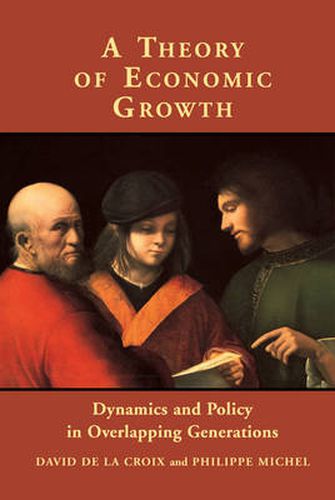Readings Newsletter
Become a Readings Member to make your shopping experience even easier.
Sign in or sign up for free!
You’re not far away from qualifying for FREE standard shipping within Australia
You’ve qualified for FREE standard shipping within Australia
The cart is loading…






Provides an in-depth treatment of the overlapping generations model in economics incorporating production. Chapter 1 investigates competitive equilibria and corresponding dynamics: existence and uniqueness of equilibrium, global dynamics of capital (including poverty traps), and various extensions of the model. Chapter 2 analyzes the optimality of allocations in this framework, using both the value function and marginal approaches. Optimality with unbounded growth is also analyzed. Policy issues including the Second Welfare Theorem, pensions, government spending, and optimal taxation, are discussed in chapter 3. The notion of public debt is introduced in chapter 4 and the sustainability of policies with budget deficits/surpluses is examined. The last chapter presents extensions of the model including altruism, education/human capital, and habit formation. Methodological emphasis is put on using general preferences and technologies, on the global study of dynamic aspects of the model, and on furnishing adequate tools to analyze policies involving inter-generational transfers.
$9.00 standard shipping within Australia
FREE standard shipping within Australia for orders over $100.00
Express & International shipping calculated at checkout
Provides an in-depth treatment of the overlapping generations model in economics incorporating production. Chapter 1 investigates competitive equilibria and corresponding dynamics: existence and uniqueness of equilibrium, global dynamics of capital (including poverty traps), and various extensions of the model. Chapter 2 analyzes the optimality of allocations in this framework, using both the value function and marginal approaches. Optimality with unbounded growth is also analyzed. Policy issues including the Second Welfare Theorem, pensions, government spending, and optimal taxation, are discussed in chapter 3. The notion of public debt is introduced in chapter 4 and the sustainability of policies with budget deficits/surpluses is examined. The last chapter presents extensions of the model including altruism, education/human capital, and habit formation. Methodological emphasis is put on using general preferences and technologies, on the global study of dynamic aspects of the model, and on furnishing adequate tools to analyze policies involving inter-generational transfers.